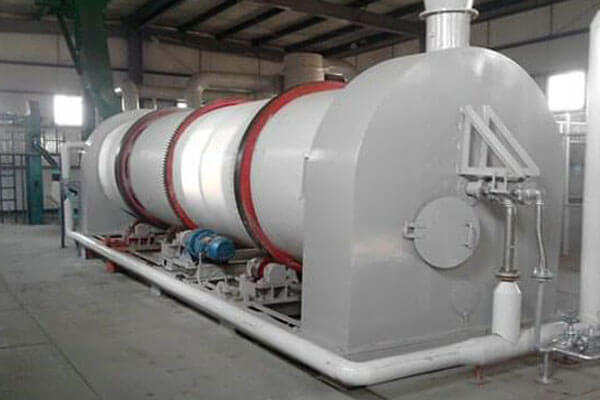Soybean Oil Production Line
The soybean oil production line is a process in which soybeans are treated by pressing or solvent extraction method to obtain crude soybean oil and then refined to obtain edible soya oil. The two oil production methods have different application scenarios and advantages and disadvantages, please contact us to provide you with a more suitable and complete soybean oil production line solution. With capacities ranging from 10tpd to 5,000tpd, our soybean oil production plants are perfect for meeting the demands of large-scale edible oil production requirements.Soybean is a kind of low oil content oilseed compared with other oilseeds such as peanut, sesame, canola, etc. So usually we adopt pretreatment and solvent extraction way to process soybean and get soybean oil, which can reduce residue oil rate and increase oil productivity compared with pressing way. Different oilseeds have different processing technology. Soybean oil production line includes soybean pretreatment process, soybean oil extracting process and soybean crude oil refining process.
A large-scale soybean oil production plant involves several interconnected processes to efficiently extract oil from soybeans and produce high-quality refined soybean oil. The soybean oil production line includes the soybean pretreatment process, soybean pre-pressing process, soybean oil extracting process, and soybean crude oil refining process. Our advanced soybean oil equipment, such as solvent extractors and automatic control systems, ensures high yields and consistent quality of both crude and refined oil.

Soybean Pretreatment Process
Before soybean oil pressing, the soybean needs cleaning, crushing, softening, flaking, extrusion, etc., which provides conditions for the next step of soybean oil processing.
Soybean Cleaning Process And Related Machines

The soybean cleaning process is a screening and stone removal process. It is very important for the soybean oil pre-treatment process.
The High-efficiency vibrating screen is adopted here to remove impurities, effectively achieve the cleaning effect, ensure a good operating environment and stability of production, and simultaneously improve the product quality.
Suction-type specific gravity stoner is used to remove hard impurities like mud and stones.
The magnetic selector is applied to remove metal impurities.
A dust remover is equipped in this process, the suction air net system can effectively control the dust of raw materials and ensure the cleanliness of soybean raw materials.
Soybean Crushing Process And Related Machines

The soybean crushing process facilitates the transfer of temperature and moisture during steaming and frying and improves the steaming and frying effect. To achieve a good softening and flaking effect, the soybean needs to be crushed into 4-6 pieces to ensure uniform granularity. Therefore, when softening, the moisture is uniform and thorough. The flake piece is thin but strong when flaking. The common cracking equipment is a roll crusher, hammer crusher, and disc huller.
Soybean Softening Rolling Machines

The horizontal soybean softening machine is adopted here to heat the soybean to 50-70℃. Therefore, the plasticity of soybean is increased through adjusting the moisture and temperature, creating good operation conditions for flaking and cooking. The softening process can not only make the flake thin, uniform, and tough but also reduce the nonhydratable phospholipids content in crude oil, which is convenient for the dephosphorization and physical refining of salad oil. Soybean rolling uses the mechanical function to roll the soybean from the granular to the flake.
Soybean Flaking Machines

The cytoderm of soybean is destroyed in this process, meanwhile, the crushed soybean with a certain granularity is made into thin slices with a thickness of 0.3mm, which aims at extracting the maximum oil in the shortest time. Thereby, the extraction speed and rate are increased, and the residual oil in soybean meals is <1%.
Soybean Oil Pressing Process

In soybean oil production, the choice between mechanical pressing and solvent extraction depends on factors like plant capacity, oil yield requirements, production costs, and intended uses of the by-products (oilcake/meal). The mechanical pressing method is usually a good choice for a soybean oil mill plant with a capacity under 100 TPD. For small to medium production scales, when residual oil in the cake is acceptable or desirable, and when producing high-value, premium, or organic oils, we recommend using the mechanical soybean pressing method. The oil press machines have a capacity ranging from 10 to 200 tons per day (TPD), and they can extract about 70% of the oil in the soybean.
Soybean Oil Solvent Extracting Process
Soybean Extruding Process
The soybean extruding process is to break the crushed, rolled soybean into porous expanded granular material using soybean extrusion equipment. Extrusion is a kind of high-temperature and short-time processing. Generally, the extrusion temperature can reach 110~200℃, and the residence time in the extruder is 1~3 minutes. The commonly used soybean extruding machine is a moisture single-screw extruder, and the material is extruded by heating, pressing, gluing, and vacuum extrusion.
Soybean Oil Solvent Extracting
The pretreated soybean flakes are sent to the soybean solvent extraction plant. The soybean oil extraction plant uses a kind of solvent (normal hexane) to absorb the oil from the soybean, and then the machines separate the solvent from soybean crude oil. The solvent can be recycled, and the soybean crude oil is refined by an oil refinery plant. After extraction, the residual oil in the cake is generally less than 1%. Soybean meal cakes can also be used to process animal feed.
Soybean Oil Refining Process
